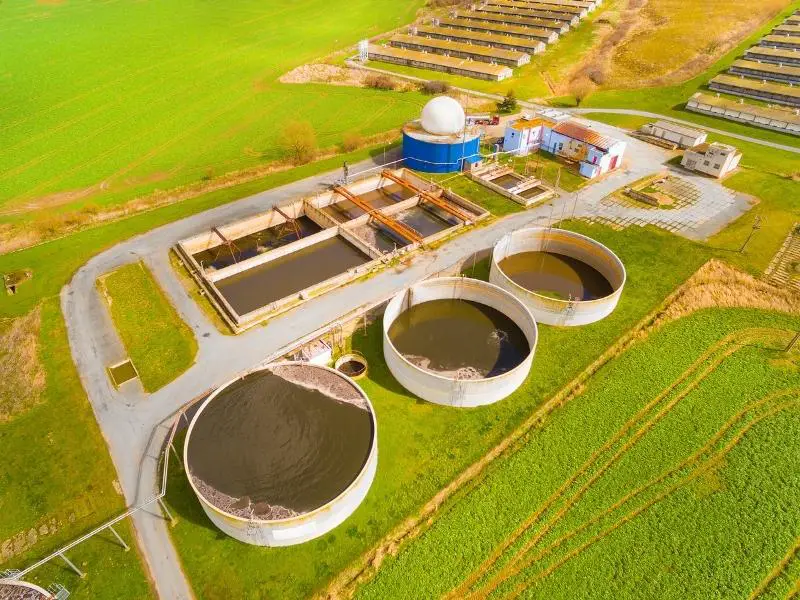Breakaway from traditional fuels and switch over to a renewable energy source. Biomass and biogas continue to gain popularity as alternative fuel sources in the modern world.
Carbon constitutes a major component of both biomass and biogas. So what is the difference between Biomass and Biogas? The dissimilarity lies in biomass existing as a solid and biogas consisting of a mixture of various gaseous compounds.
The following points highlight the main topics of interest. We also look at any other related information you may want to know.
- What are Biofuels?
- What is Biomass?
- What is Biogas?
- Identical Features
- Difference Between Biomass and Biogas
Find out why you need to start using carbon-neutral biofuels! Below, we discuss the difference between biomass and biofuels and how they reduce the amount of carbon released into the atmosphere.

What Are Biofuels?
We need to understand biofuels better before we learn about biomass and biogas. Biofuels represent fuels extracted from living organisms, such as animals and plants. Biofuels do not produce additional carbon dioxide when burnt, making them carbon neutral.
Biofuel production involves quick, modern methods rather than the slow geological processes that form fossil fuels. Any fuel derived from biomass falls into the category of biofuels.
What Is Biomass?
Biomass represents biological materials derived from animals or plants. Biomass fuel production depends on the burning of organic matter to produce energy. It presents an effective way to create energy.
Biomass fuel usage began ever since people burnt wood for heating and cooking purposes. Biomass typifies a sustainable and renewable form of energy. You can even produce electricity and other energy forms using biomass.
Some biomass sources include wood, agriculture crops, animal manure, wood-waste extracts, and forest debris. Wood constitutes the primary component of biomass.
Some people grow crops for the sole purpose of producing biomass fuel. Fermenting biomass crops like sugarcane produces bioethanol. You can use bioethanol alone or as a fossil fuel additive to reduce carbon emissions. Other biofuels produced using biomass include biokerosene and biodiesel.
You can burn biomass to generate steam and use it to produce light or heat energy. You can also use it as a fuel source to produce biogas.
Decomposed biomass forms biogas. The decomposition process may occur naturally or through industrial processes. Using industrial means to decompose the biomass requires animal or vegetable fat as raw materials.
Advantages of Biomass
Some advantages of biomass include:
- Wide availability as a renewable source of energy
Biomass represents an infinite source of organic materials because of constant waste generation in the modern world.
- Carbon neutrality
Biomass fuels release the same carbon amount absorbed by plants
- Lowers dependence on fossil fuels
Along with limited supply issues, fossil fuels also release large quantities of carbon dioxide.
- Lesser cost than fossil fuels
Biomass production does not require expensive machinery. Biomass manufacturers generate higher profit margins at smaller investment rates.
- Good source of revenue for manufacturers
Manufacturers literally make use of waste to earn large dividends.
- Reduces garbage and waste in landfills
Burning waste reduces the amount of garbage in landfills.
What Is Biogas?
Biogas represents a combination of various gases derived from organic substances. Biogas production occurs either through industrial or natural processes. In nature, decomposing organic matter produces biogas. Industries produce biogas using digesters.
Some biogas sources include waste, animal manure, food scraps, and sludge. Breaking down organic matter under anaerobic conditions produces biogas. Anaerobic environments contain no free oxygen.
The process of digestion in anaerobic microorganisms produces biogas. Carbon dioxide and methane constitute the primary components of biogas. Methane proves more dangerous than carbon dioxide as a greenhouse gas.
However, the methane becomes trapped in the anaerobic environment during biogas production. Workers burn this methane to produce carbon dioxide, electricity, and heat.
Benefits of Anaerobic Digestion
Anaerobic digestion provides a prime example of an environment-friendly way of producing energy. It comes with several benefits.
- Transforms waste and other unwanted organic materials into valuable resources
- A natural alternative to fossil fuels
- Produces a nutrient-rich fertilizer
- Reduces carbon footprint
Many people use biogas as fuel. It finds use in the treatment of industrial or municipal wastewater. You can also use biogas to produce gas and transportation fuel.
Advantages of Biogas
Biogas provides several advantages. These include:
- Renewable energy source
The renewable nature of organic materials derived from animals and plants makes biogas a source of green energy.
- Better waste utilization
Biogas production represents a better way to utilize waste instead of leaving it to rot in landfills. The process produces lower amounts of carbon dioxide and methane.
- Circular economy
Wastewater, animal manure, crop residue, and food waste add to environmental pollution. The biogas production process turns these organic wastes into fertilizers, electricity, natural gas, and more.
- Reliable energy alternative
Areas with limited electricity access can depend on biogas as an alternative. It provides an economical way to set up both large and small-scale industries.
Identical Features
Biomass and biogas possess certain identical features.
- Both biomass and biogas represent biofuels
- Biomass and biogas both release Carbon dioxide
- They both stand as examples of renewable fuels
Main Differences
Several differences exist between biomass and biogas despite the tag of ‘biofuel’ that both carry.
Biomass represents biological materials extracted from living matter whereas, biogas consists of a mixture of gases produced from decomposed organic matter.
Biogas exists in the gaseous state, and biomass retains its solid form. The sources of biomass include living or recently dead organisms. Organic matter constitutes the primary source of biogas.
Biomass consists of biological material. Carbon dioxide and methane constitute the primary components of biogas.
Biomass vs. Biogas
Make the switch toward sustainable energy production today! Biomass and biogas prove necessary as renewable energy sources in this modern world. However, biomass exists as a solid while biogas occurs in the gaseous state, making it the key difference between biomass and biogas.




